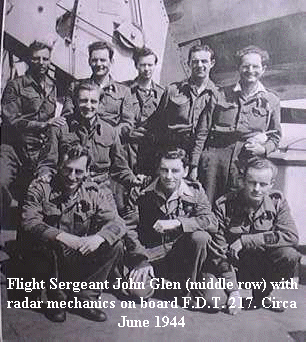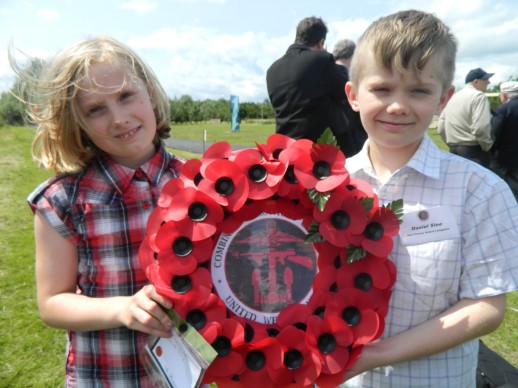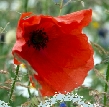|
The Combined Operations Project; 2000 to date.
A
Project in Remembrance of all who Served
By Geoff Slee
 Introduction Introduction
This
website, Facebook page and memorial are dedicated to the hundreds of thousands of men and women,
from many Allied Nations,
who served in, or alongside, the Combined Operations Command in WW2.
[Photo; Geoff Slee, Website and Facebook publisher and host, at the memorial
dedication ceremony in July 2013].
The
Command's officers and rank and file service personnel were drawn from the
mainstream services but they proudly operated as a unified force entirely
devoted to offensive operations against the enemy. Their motto was "United We
Conquer".
Funding
Public
donations from around the world, totalling £30,000 (2021), have fully funded the
project through three distinct income and expenditure streams - one for the
website and two for the memorial.
The website is
independent,
"not for profit" and largely funded from membership fees. It is free
to use, carries no adverts, pop-ups or cookies and has no connection with any
military organisation, government department or charitable trust. Surplus
website funds support forces' charities and the Memorial Funds. All income and
expenditure transactions in support of the website since November 2000, are on
our accounts page.
 The
first memorial stream financed the original
Memorial Fund set up in 2006 to
raise funds for the construction of a permanent memorial. Although the
dedication ceremony was held in July 2013, it was not until January 2017 that
the final bills were paid when a single donation of £2,000 topped off the fund
at a magnificent £21,128! That fund was then closed and its small surplus became
the initial deposit for the Memorial
Maintenance and Development Fund. My signature and one other are required to authorise
expenditure. The
first memorial stream financed the original
Memorial Fund set up in 2006 to
raise funds for the construction of a permanent memorial. Although the
dedication ceremony was held in July 2013, it was not until January 2017 that
the final bills were paid when a single donation of £2,000 topped off the fund
at a magnificent £21,128! That fund was then closed and its small surplus became
the initial deposit for the Memorial
Maintenance and Development Fund. My signature and one other are required to authorise
expenditure.
Background
The Combined Operations Command is less well known for its wartime achievements
than many other Commands since the majority of its personnel, recruited from the
Army, Navy and Air Force, returned to their original units when the war ended. At the memorial dedication ceremony on the 4th of July 2013,
General Barrons alluded to this when he said "After
the end of the war, the skills and lessons faded quickly with little imperative
and nobody to champion them. For some, the increasing importance of air power
made these capabilities seem less relevant, and they were quite wrong."
The
enormity and diversity of the Combined Operations contribution to the war effort
was second to none and the 200 Royal Marines who form part of the UK's latest
aircraft carrier crews is testimony to it's relevance today - land sea and air
forces working together as a unified force.
 In the mid 1990s, I
discovered that my father in law, John Glen, had worked on wartime radar
installations in the RAF and in the
Combined Operations Command. After decades of silence, his fascinating wartime
story unfolded in the second half of the 1990s and along the way, it captured my interest. In the mid 1990s, I
discovered that my father in law, John Glen, had worked on wartime radar
installations in the RAF and in the
Combined Operations Command. After decades of silence, his fascinating wartime
story unfolded in the second half of the 1990s and along the way, it captured my interest.
[Photo; John Glen, left middle row
with his team].
After
his work on newly established coastal radar stations in the early
1940s, John
was attached to the Combined Operations Command and reported to John
Brown's shipyard on the Clyde. There, he joined a recently arrived US
vessel undergoing conversion from a Landing Ship Tank (USS LST 217)
to a
Fighter Direction Tender (FDT 217), together with FDT 216 and FDT 13.
John
served on FDT 217 in charge of a small team of Royal Canadian Air Force (RCAF) volunteer
radar technicians. They maintained and operated radar equipment on board 217,
most memorably off the Normandy beaches for 3 critical weeks in June 1944.
When land
based mobile radar units took over the role as the Allied Armies advanced
through Normandy, the job of the FDTs
was done. John was mentioned in dispatches, although he was reluctant to take
personal credit for the excellent performance of his team.
 I read
Bernard Fergusson's excellent book "The Watery Maze", only to realise that the
Combined
Operations Command was vastly greater in size, scope and influence, than I had
first thought. Since there was no information on the
Internet, and with the naive confidence of a novice, I set about writing a few
web pages. I read
Bernard Fergusson's excellent book "The Watery Maze", only to realise that the
Combined
Operations Command was vastly greater in size, scope and influence, than I had
first thought. Since there was no information on the
Internet, and with the naive confidence of a novice, I set about writing a few
web pages.
Work on the website
started in November 2000 with the purchase of the
www.combinedops.com domain name for
£40.65 per annum. The following March, web hosting services were purchased for
£57.58 per annum - incredibly expensive by today's standards. For the first 4 or
5 years, the website ran a deficit but, as it became firmly established,
and with improving finances, the Combined Operations Command Memorial Fund was set up.
It was an act of blind
faith, if not folly. There was little money, no design, no site, no bank account
and no local support in the form of a committee. Financial donations, written contributions
for the website, fund raising activities, practical help and advice from many
hundreds of veterans, their families and friends, sustained the project that
would otherwise have faltered in its infancy. It was a privilege for me to be the means by which their
wonderful support and encouragement metamorphosed into a memorial, educational
website and Facebook page.
By a process I've never fully understood and over which I exercised little control, the
website grew like 'Topsy.' It now receives hundreds of thousands of visits each year
(6,000,000 hits) from around the world and yet the final chapters of the Command's remarkable story, are as elusive as ever!
 John Glen did not live to see the little acorn he planted
grow and develop. He died in November 2000 at the age of 81. He would have
been so proud to see two of his great grandchildren lay a wreath at the
dedication ceremony on behalf of
all who contributed to the memorial fund. John Glen did not live to see the little acorn he planted
grow and develop. He died in November 2000 at the age of 81. He would have
been so proud to see two of his great grandchildren lay a wreath at the
dedication ceremony on behalf of
all who contributed to the memorial fund.
Looking
to the Future
The website and
memorial aim to;
01). Preserve
the memory of the achievements and sacrifices of the Combined
Operations Command and the thousands of all nationalities who served
in or alongside the Command on operations in WW2.
02). Improve public recognition of the Combined Operations
Command's substantial contribution to the Allied victory in World War II.
03). Set up appropriate
measures to ensure the long term development and maintenance of the
memorial and website in perpetuity.
04). Provide free access to the website in perpetuity.
05). Publish
Combined Ops related articles, stories, anecdotes, reminiscences,
diary entries, poems and photographs from visitors to the site or from
our own resources.
06). Provide notice boards on the website for appeals
for information or advice and the means for anyone to respond
directly.
07). Provide
links to external websites that provide complementary historical information, WW2 records and veterans' welfare.
08). Provide an extensive list
of Combined Ops related books and the means of sourcing them
including 'out of
print' books.
09). Provide memberships to those who wish to support the
website's purposes and/or to request advice or information.
 
Geoff Slee, Edinburgh, Scotland.
[18/11/21]
|






